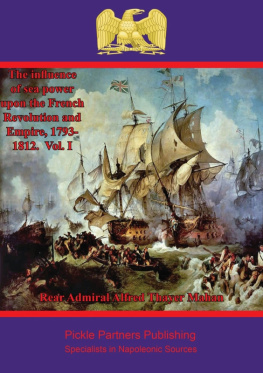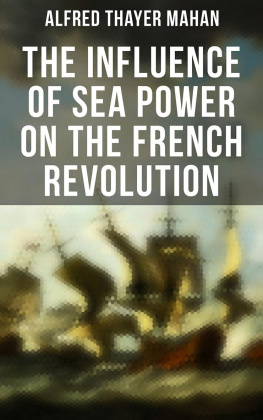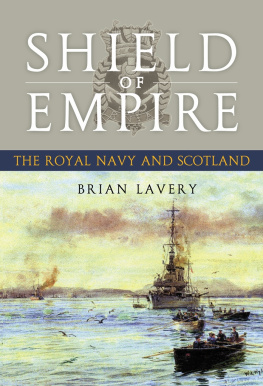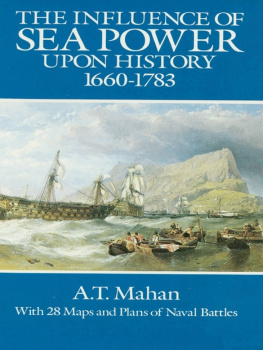

This edition is published by PICKLE PARTNERS PUBLISHING www.picklepartnerspublishing.com
To join our mailing list for new titles or for issues with our books contact@picklepartnerspublishing.com
Text originally published in 1894 under the same title.
Pickle Partners Publishing 2013, all rights reserved. No part of this publication may be reproduced, stored in a retrieval system or transmitted by any means, electrical, mechanical or otherwise without the written permission of the copyright holder.
Publishers Note
Although in most cases we have retained the Authors original spelling and grammar to authentically reproduce the work of the Author and the original intent of such material, some additional notes and clarifications have been added for the modern readers benefit.
We have also made every effort to include all maps and illustrations of the original edition the limitations of formatting do not allow of including larger maps, we will upload as many of these maps as possible.
THE
INFLUENCE OF SEA POWER
UPON THE
FRENCH REVOLUTION AND EMPIRE
1793-1812
BY
CAPTAIN A. T. MAHAN, U.S.N.
PRESIDENT UNITED STATES NAVAL WAS COLLEGE
AUTHOR OF THE INFLUENCE OF SEA POWER UPON HISTORY, 1660-1783
OF THE GULF AND INLAND WATERS, AND OF A
LIFE OF ADMIRAL FARRAGUT
IN TWO VOLUMES
V OL . I
SECOND EDITION
CONTENTS
PREFACE.
PREFACE.
THE present work, like its predecessor, The Influence of Sea Power upon History, 1660-1783, is wholly a result of the authors connection with the United States Naval War College as lecturer upon Naval History and Naval Tactics.
When first asked to undertake that duty, the question naturally arose how to impart to the subject of Naval History an aspect which, in this very utilitarian age, should not be open to the ready reproach of saying merely archaeological interest, and possessing no practical value for men called upon to use the changed materials of modern naval war. You wont have much to say about history, was then the somewhat discouraging comment of a senior officer of his own service.
In pondering this matter, it occurred to the authorwhose acquaintance with naval history was at that time wholly superficialthat the part played by navies, and by maritime power generally, as a factor in the results of history, and as shaping the destinies of nations and of the world, had received little or no particular attention. If this were so, an analysis of the course of events through a series of years, directed to show the influence of Sea Power upon History, would at least serve to imbue his hearers with an exalted sense of the mission of their calling; and might also, by throwing light upon the political bearings of naval force, contribute to give the service and the country a more definite impression of the necessity to provide a fleet adequate to great undertakings, lest, if an occasion should arise for what he has ventured to call statesmanship directing arms, we should be found unprepared, through having no sufficient armed force to direct.
In avowing this as the original, and, for a time at least, almost the sole motive of his work, the author practically confesses that he at the beginning had no scientific appreciation or reasoned knowledge of the naval history of the past. Upon giving this the attention required by his new duties, and collating the various incidents with the teachings of recognized authorities upon land warfare, he soon came to recognize that the principles which they claimed to be of general application in their own specialty received also ample and convincing illustration in naval annals; although the development of the Art of War at sea has been slower, and is now less advanced, than on shore. This backward result has been due, partly, to uncertainties peculiar to the sea, and partly to a contempt for the study of the past, and of its experience, as not practical, from which the naval profession has not yet wholly rid itself.
Thus, in its course, the authors former work, without abandoning its first simple motive, expanded into an attempt to analyze the strategic conduct of the naval campaigns, as well as the tactical features of the various battlesall too fewin which any clear tactical purpose was shown by the commanders engaged. The cordial reception given to the work by his professional brethren, in Great Britain as well as at home, has been to him not only most gratifying, but wholly unexpected. Its chief significance is, however, not personal. The somewhat surprised satisfaction testified is virtually an admission that, in the race for material and mechanical development, sea-officers as a class have allowed their attention to be unduly diverted from the systematic study of the Conduct of War, which is their peculiar and main concern. For, if the commendation bestowed be at all deserved, it is to be ascribed simply to the fact that the author has been led to give to the most important part of the profession an attention which it is in the power of any other officer to bestow, but which too few actually do.
That the author has done so is due, wholly and exclusively, to the Naval War College, which was instituted to promote such studies. If further success attend his present venture, it is his hope that this avowal may help to assure the long uncertain fortunes of the College, to which,and to its founder, Rear-Admiral Stephen B. Luce,he gratefully acknowledges his indebtedness for guiding him into a path he would not himself have found.
The term of this work is fixed at the year 1812; a date signalized by Napoleons invasion of Russia, which wrecked his empire,or at least gave the outward and visible token of the wreck,and also by the outbreak of war between Great Britain and the United States. To the latter, as a subject of particular national interest, the author hopes in the near future to devote a special study.
A. T. MAHAN.
October. 1892.
LIST OF ILLUSTRATIONS. VOLUME I
MAPS AND BATTLE PLANS.
Manoeuvres of May 29, 1794, Figures 1 and 2
Manoeuvres of May 29, 1794, Fig. 3
Battle of June 1, 1794
Map of Northern Italy
Battle of Cape St. Vincent
Map of the Mediterranean
Coast Map, Alexandria to the Nile
Battle of the Nile
Map of English Channel and North Sea
Map of Brest and its Approaches
THE INFLUENCE OF SEA POWER UPON THE FRENCH REVOLUTION AND EMPIRE .
CHAPTER I. INTRODUCTORY.
Outline of Events in Europe, 1783-1793.
THE ten years following the Peace of Versailles, September 3,1788, coming between the two great wars of American Independence and of the French Revolution, seem like a time of stagnation. The muttering and heaving which foretold the on come of the later struggle were indeed to be heard by those whose ears were open, long before 1793. The opening events and violences which marked the political revolution were of earlier date, and war with Austria and Prussia began even in 1792; but the year 1793 stands out with a peculiar prominence, marked as it is by the murder of the king and queen, the beginning of the Reign of Terror, and the outbreak of hostilities with the great Sea Power, whose stubborn, relentless purpose and mighty wealth were to exert the decisive influence upon the result of the war. Untiring in sustaining with her gold the poorer powers of the Continent against the common enemy, dogged in bearing up alone the burden of the war, when one by one her allies dropped away, the year in which Great Britain, with her fleets, her commerce, and her money, rose against the French republic, with its conquering armies, its ruined navy, and its bankrupt treasury, may well be taken as the beginning of that tremendous strife which ended at Waterloo.
Next page











